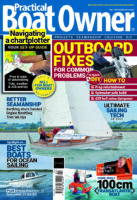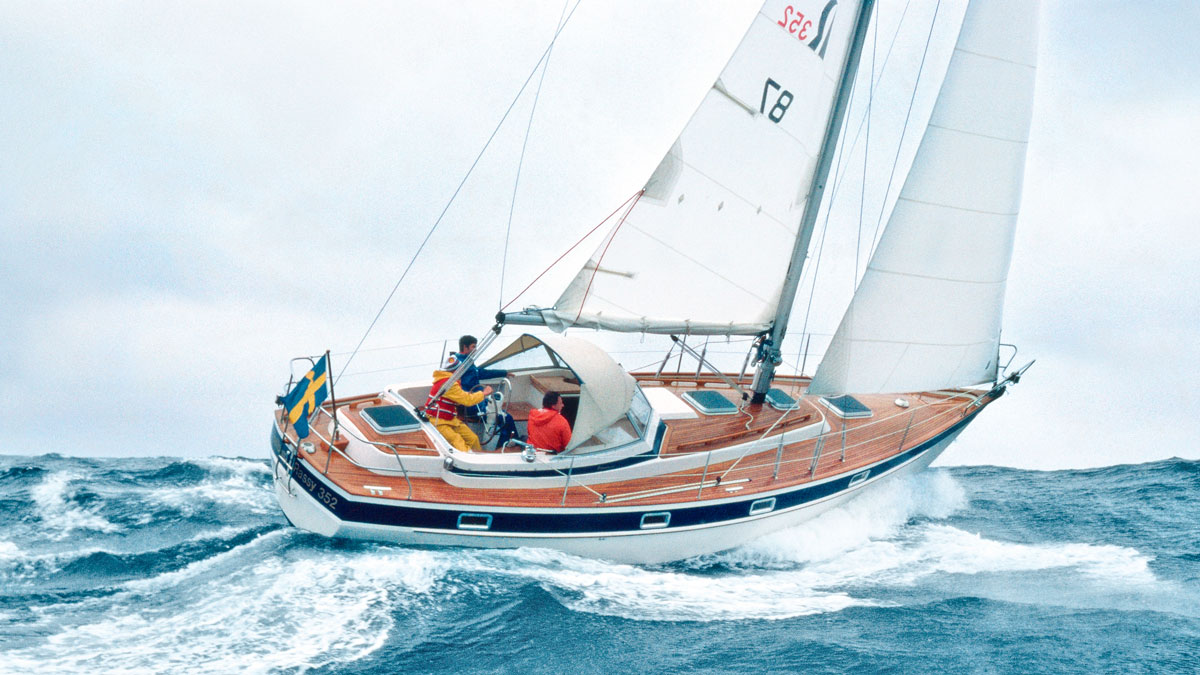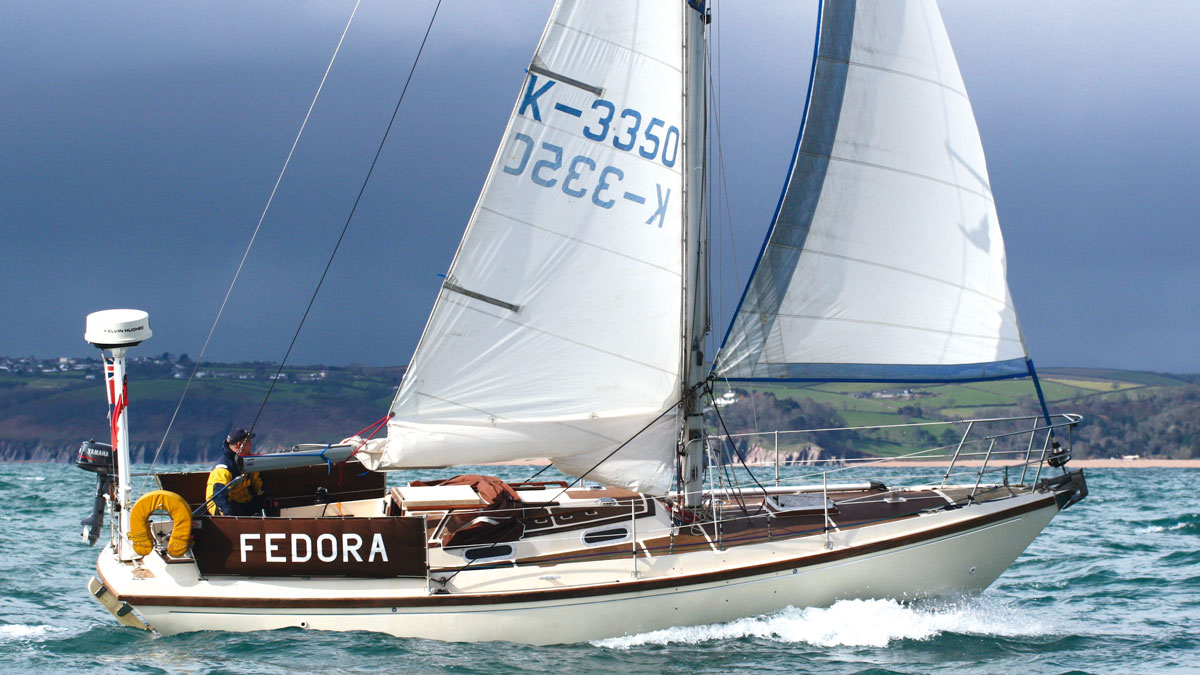The Moody 34 and 346 were the smallest and best-selling of Moody’s centre cockpit sailboat models in the 1980s. Rupert Holmes weighs in on their merits and offers 5 alternative designs.
Today, new centre cockpit sailboat designs are rarely encountered other than at the high end of the market for larger yachts, such as those produced by Oyster and Contest. But in the 1970s and 1980s, a number of boatbuilders produced desirable centre cockpit sailboats as small as 33ft.
Designs that incorporated access to the aft cabin from the saloon via an internal walk-through passage quickly became popular, setting a new standard for internal volumes, with a large cabin at each end of the boat, offering both comfort and privacy.
Best centre cockpit sailboat designs: the Moody range
Moody was a giant of the British yacht building industry and forged a reputation from the early 1970s onwards for producing quality family cruisers with spacious accommodation. The range was perceived as being a quality offering and found favour with those who were looking for a comfortable cruiser for weekend and holiday sailing, as well as longer liveaboard and ocean cruising.
Launched in 1983 to replace the Moody 333, which itself was an updated version of the first Moody yacht in production, the Moody 33, the 34 and 346 were the smallest and best-selling models for Moody in the 1980s.
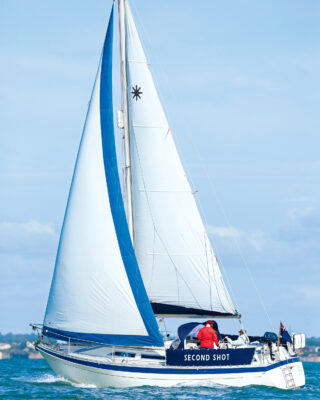
The Moody 34’s centre cockpit is deep and secure. Photo: David Harding.
Moody 34
In all, 419 boats were built across the two models with the later version accounting for around 60% of sales. This is effectively a Mark 2 version of the 34, dating from 1986, with the transom extended by 12in to create a small bathing platform.
Although the 34’s hull was only six inches longer than that of the older Moody 33 and 333, the new boat had significantly more volume, particularly in the after sections. This allowed for an enlarged walk-through to the aft cabin, as well as achieving marginal standing headroom in this part of the boat.
The surprisingly bright and spacious aft cabin is by far the larger of the two, with an offset double berth to port, large corner settee to starboard, a large floor area and reasonable stowage, plus more in a pair of full-height lockers in the walk-through area aft of the galley. Placing the L-shaped galley here increases the available space, so there is a generous worktop area and stowage volumes, as well as twin sinks.
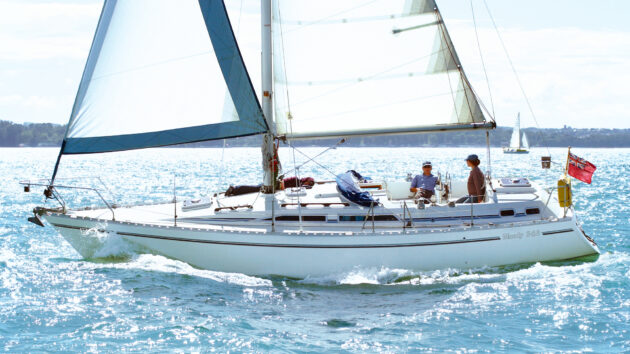
The bathing platform means it is easy to transfer from the Moody 346 to a tender. Photo: David Harding.
The heads compartment is aft near the companionway, close to the boat’s centre of motion and convenient for the crew on deck. Forward of this is a good-sized aft-facing chart table that uses the end of the starboard saloon settee as a seat. The saloon is also a good size, while the forecabin has a double vee-berth, with a small standing/changing area at its head and reasonable stowage in cabinets on each side.
Overall it’s a spacious layout that works as well when on passage as in port, yet without the big wide open spaces sometimes seen on today’s yachts that can be difficult to negotiate in a rough sea.
Moody 34 and 346 specifications:
LOA: 10.50m 34ft 6in
LWL: 8.50m 27ft 11in
Beam: 3.56m 11ft 8in
Draught: (fin keel) 1.50m 5ft 0in
(bilge keel) 1.14m 3ft 9in
Displacement: 5,080kg 11,200lb
Ballast: 2,040kg 4,500lb
Sail area: 48m2 515ft2
Owners’ association: moodyowners.org
Centre cockpit sailboats: a question of choice
On deck, the centre cockpit arrangement can be a bit like Marmite.
Some people love it and feel a sense of security, as far as possible from the water. Yet it’s relatively high up – a necessity to maximise headroom in the walk-through to the aft cabin – which subjects crew to more motion than an aft cockpit design with lower seating and cockpit floor.
The small single wheel also dates the appearance and has practical drawbacks as it’s not as easy to see the luff of the headsail, or even a spinnaker, from the helm. The mainsheet is taken to a traveller on the aft cabin coachroof, just behind the wheel, making it commendably easily reached from the helm.
On the downside, trimming the mainsail may require a trip to the back of the cockpit when steering with an autopilot.
Although displacement climbed by some 5% compared to the 33, this was complemented by an increase in sail area of closer to 10%, thanks to the additional stability afforded by the wider aft sections and a heavier and slightly deeper keel.
Nevertheless, at only 1.5m for the fin keel version, the draught is not particularly deep and there’s no bulb to lower the centre of gravity, so initial stability is not as high as that of many later designs.
A large number of owners also opted for bilge keels, with a draught of only 1.14m, making them ideal for exploring tidal estuaries, or even just anchoring closer to the beach than is possible with a deep keel yacht.
Given the modest sail area, it should be no surprise that these are not quick boats in light airs when most skippers will rely heavily on the engine. In practice, performance to windward will vary considerably today as a function of the sails with which each boat is equipped.
Old and misshapen Dacron cloth will induce weather helm, especially when the cloth stretches in gusts, while those with recent quality Dacron or laminate sails will heel less in the puffs, be easier
to steer and get to the destination earlier.
While many new designs of this period had changed to spade rudders, designer Bill Dixon retained a half-depth skeg from which the rudder was hung, but it also benefited from some balance area below this point to reduce the weight of the helm.
Centre cockpit sailboat designs: beyond the Moody 34
If you’re open to a slightly larger boat (and a modest stretch of your budget), the Moody 37/376 has surprisingly more space – including a two-head layout – than the increase in overall length might suggest.
In 1990 the 346 was replaced by the Moody 35, which offers more space thanks to a little more beam and longer waterline length. It was launched in the 1990s recession when the big French and German yards were taking an ever larger share of the market. All the same, almost 200 Moody 35s were sold over a six-year period.
Compared to the 346, this model gained a larger aft cabin, with additional stowage and easier access to the berth. There’s also an improved galley area, with ample worktop space and stowage that’s configured to work well both at sea and in harbour.
Alternatives to the Moody 34
In the 1960s and 1970s centre cockpit sailboat designs of this size usually had small separate aft cabins that were unconnected with the rest of the interior. The advent of designs that could carve out enough headroom to connect the two with a corridor, even if it only offered stooping headroom, along with a larger aft cabin with better headroom, stowage and berths was a game changer.
As a result, this format was particularly popular in its day, with both Westerly and Moody – the two biggest British builders of cruising yachts of the time – offering very popular ranges.
Yet a surprisingly small number of other builders followed suit and only the rather more expensive Hallberg-Rassy 352 sold in larger numbers, with more than 800 boats launched between 1978 and 1991.
Westerly Seahawk, Oceandream and Oceanquest

ABOVE The Westerly Seahawk’s cockpit and high topsides and coachroof means there is plenty of room to accommodate crew. Photo: Pier Photography / Alamy.
The Seahawk 34, first launched at the 1984 Southampton Boat Show, and its subsequent variants, including the Oceanquest 35, filled the gap between the 32ft aft cockpit Fulmar and the 36ft centre cockpit Corsair, after sales of the dated Discus dried up.
The Ed Dubois-designed Seahawk has significantly more beam than the previous generation Westerly 33 and Discus. The maximum beam is also carried further aft on the Dubois design, giving a substantially larger aft cabin. The cockpit design was also improved to provide more head and elbow room in the walk-through and a generous galley area.
The hull shape also has a deeper central bustle aft, creating additional headroom in the aft cabin, making this design stand out from others of this size. The aft cabin – a key selling point for this boat – has a full size double bed, plus more floor space, and other amenities including a corner settee, washbasin and large hanging locker.
In 1988 the aft sections were drawn out to provide a sugar scoop bathing platform and the boat was renamed the Seahawk 35. The later Oceandream, effectively a Seahawk Mk IV, had mostly minor or cosmetic changes. However, the Oceanquest of 1993 had a new deck and rig, plus a significantly revamped interior layout, while using the same hull.
In particular, the galley was moved from the passageway to the starboard side next to the companionway, while a larger heads and shower compartment was placed outboard of the passageway. However, the most dramatic changes were in the aft cabin, which gained a large centre-line peninsula bed, marking a big change compared to earlier boats.
Despite the additional beam, the Seahawk was generally noticeably faster than the 33 and the Discus, although it had a more lively motion in a big sea. In the early 1990s, I sailed several thousand miles in the aft cockpit version of this boat, the Falcon, finding it to be surprisingly quick and well-mannered compared to older designs of a similar length.
By most accounts, the Seahawk is slightly more tender thanks to a higher centre of gravity, a factor that’s aggravated if a large crew is in the raised centre cockpit, but still performs well once there’s enough breeze to get moving nicely.
In all, almost 400 boats were built using this hull over a period of more than a decade, including 125 Seahawk 34s, 40 Seahawk 35s, eight Oceandreams, more than 40 Oceanquests, plus 68 Falcon 34s and a score of Falcon 35s. In addition, there were around 70 Riviera 35s, an aft cockpit deck saloon model launched in 1988.
Seahawk 34 specifications:
LOA: 10.26m 33ft 8in
LWL: 8.23m 27ft 0in
Beam: 12.27ft 3.74m
Draught: (fin keel) 1.5m 4ft 11in
(bilge keel) 1.19m 3ft 11in
Displacement: (fin) 5,760kg 12,700lb
Ballast: (fin) 2,600kg 5,730lb
(bilge) 2,800kg 6,170lb
Mainsail: 22.3m2 240ft2
Genoa: 45.7m2 492ft2
Owners’ association: westerly-owners.co.uk
Hallberg-Rassy 352

BELOW The Hallberg-Rassy 352 was sold with a choice of standard and tall masthead rigs. Photo: Patrick Eden/Alamy Stock Photo.
There’s a sense in which this is the centre cockpit sailboat of its size and era that all others are judged by.
In some respects, that’s possibly an unfair comparison, as this was a more expensive yacht when new and remains so today, with most examples changing hands in the £50,000-£90,000 bracket. Despite the price tag, this model outsold its contemporaries by a large margin and retains a very popular following.
Part of the success is undoubtedly down to the yard’s policy of constant improvement during a 14-year production run from 1978 onwards. Later models differed from early boats in a number of important ways, with both more interior space and improved performance.
For instance, the freeboard was increased twice, first in 1980 and again in the mid-1980s, to improve headroom, especially in the walk-through to the aft cabin. Later boats also benefited from a better galley and the very popular option of a taller double spreader rig.
The 352 was seen as a step up in quality from a builder that is still thriving today and in the same family ownership.
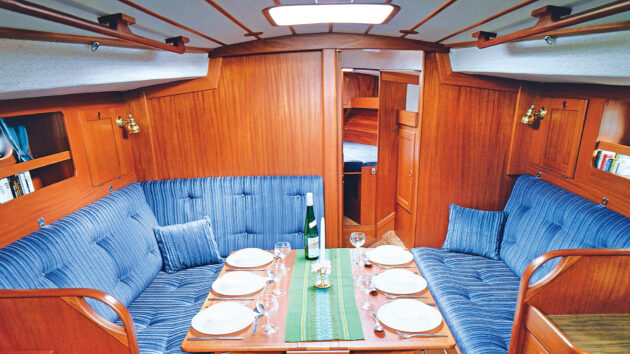
Down below on the Hallberg-Rassy 352. Photo: Hallberg-Rassy.
It’s also a markedly heavier boat than both the Moody and the Westerly, with a modest sail area/displacement ratio, but remains a very popular choice for longer-distance sailing. Owners particularly like the skeg-hung rudder, even if it makes close-quarters manoeuvring more difficult, and the encapsulated keel which has a long chord length.
Nevertheless, some buyers with a budget of this size might be better served by buying one of the larger centre cockpit Moodys such as the 37/376 or even the Moody 41/419.
Hallberg-Rassy 352 specifications
LOA: 10.54m 34ft 9in
LWL: 8.70m 28ft 7in
Beam: 3.38m 11ft 1in
Draught: 1.67m 5ft 6in
Displacement: 6,700kg 14,770 lb
Ballast: 3,000kg 6,600 lb
Sail area: 52.5m2 564ft2
Colvic Countess 33

ABOVE The Colvic Countess 33 is a solidly built, heavy-displacement cruiser. Photo: David Harding.
Colvic was a huge producer of hull and deck mouldings for almost 40 years, particularly in the 1970s and 80s, making them both for other boatbuilders and for enthusiastic owners to fit out themselves.
Designer Ian Anderson drew a conservative design with almost identical key dimensions to the Moody 34, but with a slightly longer waterline and heavier displacement.
Exact layouts and the standard of fit-out varies with different builders and home-build yacht owners, with some boats having been completed to a very high standard.
All are believed to have a walk-through from the saloon to the aft cabin, where there’s space for an offset double berth, with some boats also benefitting from a second heads compartment right aft.
As was common with Colvic builds, a wide variety of configurations was possible, including bilge or fin keels and either sloop or ketch rigs.
Despite around 20% greater displacement, the sail area is slightly less than that of the Moody, making this a generally slower boat, especially in light to moderate breezes.
Colvic Countess 33 specifications
LOA: 10.21m 33ft 6in
LWL: 8.76m 28ft 9in
Beam: 3.55m 11ft 8in
Draught: 1.52m 5ft 0in
Displacement: 6,080kg 13,400lb
Ballast: 2,291kg 5,050lb
Sail area: 45m2 485ft2
Owners’ association: countessowners.org
Rival 38
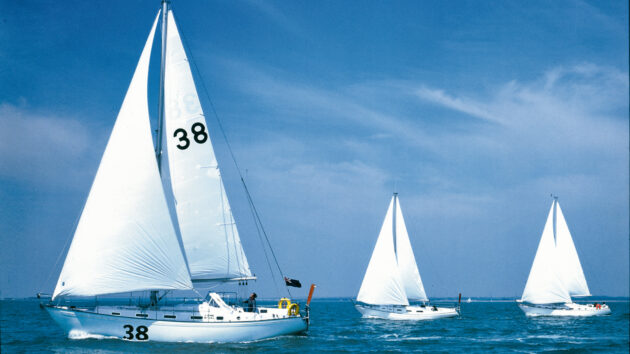
Rival 38’s side decks are over 2ft wide so there’s plenty of room to work on the deck.
This is a slightly larger alternative, with a longer waterline length that’s often seen as more of a classic bluewater long distance alternative.
Built from 1977 onwards by Southern Boatbuilding in Southampton, with heavy layups of chop strand mat, an encapsulated iron keel and a good standard of internal joinery, these were high quality boats in their day.
Both aft (pictured) and centre cockpit options were offered, with the latter having a walk-through to the aft cabin from the navigation station. While it’s not a large cabin, the berth is a generous size, and if the passageway is included as well then there’s potential for a huge amount of stowage.
Anyone accustomed to the earlier Rival 34 will be surprised by the extra accommodation this boat has compared to the smaller boat and there’s proportionately a lot more volume than the increase in beam and waterline length suggest.
I sailed one on a delivery trip from Brighton to St Katharine Docks in London in a solid south-westerly Force 5-6 with stronger gusts. It proved very comfortable reaching, and rolled less than expected downwind, though in common with many other Rivals she had to be sailed very free when upwind. In lighter conditions, a low sail area/displacement ratio points to slower performance.
In total, only 63 boats were built, with the sloop or cutter-rigged aft cockpit version proving by far the most popular. Prices can vary considerably depending on the condition and equipment, starting from less than £20,000 for a tired example and rising towards £50,000 for a tidy boat with a lot of recent equipment.
Rival 38 Specifications:
LOA: 11.46m 37ft 7in
LWL: 8.99m 29ft 6in
Beam: 3.43m 11ft 3in
Draught: 1.62m 5ft 4in
Displacement: 7,840kg 17,280lb
Sail area: 69.21m² 745ft²
Owner’s association: rivalowners.org.uk
Scanmar 35
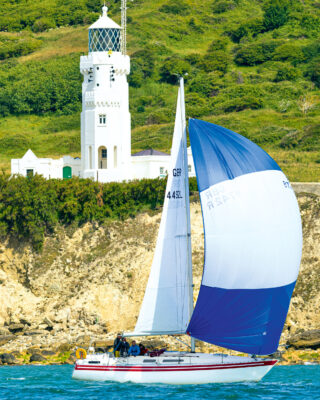
Photo: David Harding.
This Swedish cruiser is a slightly sportier option that’s marginally longer and lighter, but narrower than the Moody. It’s a 1982 design by Rolf Magnusson with a tall, efficient fractional rig and a choice of deep or shoal draught fin keels allied to a skeg-hung rudder.
The aft cabin is connected to the rest of the accommodation via a passageway though this area mostly lacks standing headroom.
Fit out was to a high standard, with a decent size galley, and heads compartment conveniently aft next to the companionway. There’s also a good aft-facing chart table, though the saloon is narrower than most of those in this selection and the double forecabin lacks standing space.
Scanmar 35 specifications:
LOA: 10.70m 35ft 1in
LWL: 8.40m 27ft 7in
Beam: 3.30m 10ft 10in
Draught: (deep keel) 1.77m 5ft 9in
Displacement: 4,800kg 10,582lb
Ballast: 4,167.00lb/1,890kg
Sail area: 46.73m² 503ft²
Beneteau First 345
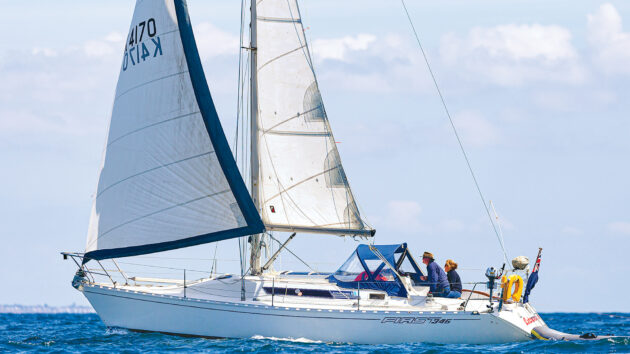
The First 345 came with a choice of deep or shoal draught fin keels. Photo: David Harding.
There are also good reasons that the centre cockpit format eventually proved unpopular in this size range and today the market is dominated by designs with big quarter cabins accessed directly from the saloon.
These models typically have a larger aft cockpit that’s less prone to spray as it’s further back in the boat and lower down, where there’s less motion, while also offering easier access to the water, whether for swimming or easy boarding from a dinghy.
The 34ft Jeanneau Melody was one of the first to offer this type of arrangement in the late 1970s, with Beneteau following soon afterwards with the First 35. This was the first design of its size to offer two double quarter cabins, as well as a third cabin forward, yet was also a boat with superb sailing qualities by the standards of the era.
Four years later this boat was re-vamped as the First 345, with more modern styling and an interior with far better natural light and ventilation thanks to a long Perspex companionway, large coachroof windows and additional opening hatches overhead.
These factors help to explain the boat’s popularity with Mediterranean charter fleets, as well as with owners who valued the boat’s performance as much as the interior comforts.
The 345 was also offered in a two-cabin format, with the heads/shower compartment aft near the companionway, where it’s easily reached from on deck and in the part of the boat with the least motion. In addition, the forecabin gained standing space at the head of the berth and decent stowage in cabinets and hanging lockers on each side.
It wasn’t long before people figured that if this much volume and such an attractive layout could be achieved in a hull that had originally been designed for racing, a boat designed at the outset as a cruiser could offer even more. We didn’t have to wait long before the new Oceanis range was launched with the 350 and 430 models in 1986, which proved to be an immediate hit.
Beneteau First 345 specifications:
Hull length 10.55m 34ft 7in
LWL: 8.90m 29ft 2in
Beam: 3.50m 11ft 6in
Draught: 1.4m 4ft 7in
or 1.85m 6ft 1in
Displacement: 5,700kg/12,600lb
Ballast: 2,050kg/4,520lb
Sail area: 64m² 689ft²
Other centre cockpit sailboat options: Oyster Mariner 35 and 39, Maxi 108, and Sweden Yachts 340
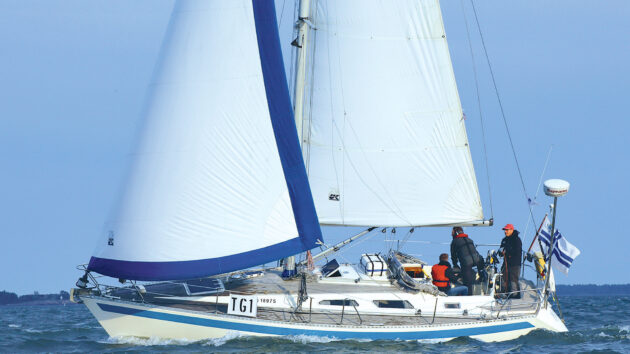
The Sweden Yachts 340 came with a standard fin keel, but a wing keel was offered on the options list. Photo: Rupert Holmes.
The Holman & Pye-designed Oyster Mariner 35 was intended as a more compact version of the Oyster 39, with a ketch rig and heavy displacement. High freeboard with, in effect, raised topsides like the Hallberg-Rassy 352, wide beam, and a long waterline length created a yacht with class-leading interior volumes. Some 20 boats were built between 1978 and 1982.
The Maxi 108 is a quicker 35ft centre cockpit sailboat designed by Olympic medallist Pelle Petterson. It features a walk-through to the aft cabin, and a linear galley on the port side, which slightly reduces the size of the saloon’s seating/dining area, but frees up space in other parts of the boat.
The Sweden Yachts 340 is another more performance-oriented option, with excellent handling. Although this is an aft cockpit design, it has a spacious, well-appointed interior and a larger than usual double quarter cabin. Sweden Yachts built 101 units between 1986 and 1999.
Second hand focus: Hallberg Rassy 352 + 8 alternative yachts to consider
Rupert Holmes celebrates the attributes of this iconic, but expensive, Scandinavian design and highlights other options
Best pilothouse boats and deck saloons
Yachts with a raised saloon can offer very comfortable onboard living. Duncan Kent looks at some of the best you…
Elizabethan 31: the solid offshore cruiser
Her reputation as an able passage-maker makes the Elizabethan 31 highly sought after by cruising folk, but she’s also a…
Best boats for a family: sail and power
Duncan Kent chooses a selection of sail and power boats that are ideally suited to cruising with your children and…
Want to read more articles like this?

A subscription to Practical Boat Owner magazine costs around 40% less than the cover price.
Print and digital editions are available through Magazines Direct – where you can also find the latest deals.
PBO is packed with information to help you get the most from boat ownership – whether sail or power.
-
-
-
- Take your DIY skills to the next level with trusted advice on boat maintenance and repairs
- Impartial, in-depth gear reviews
- Practical cruising tips for making the most of your time afloat
-
-
Follow us on Facebook, Instagram, TikTok and Twitter

